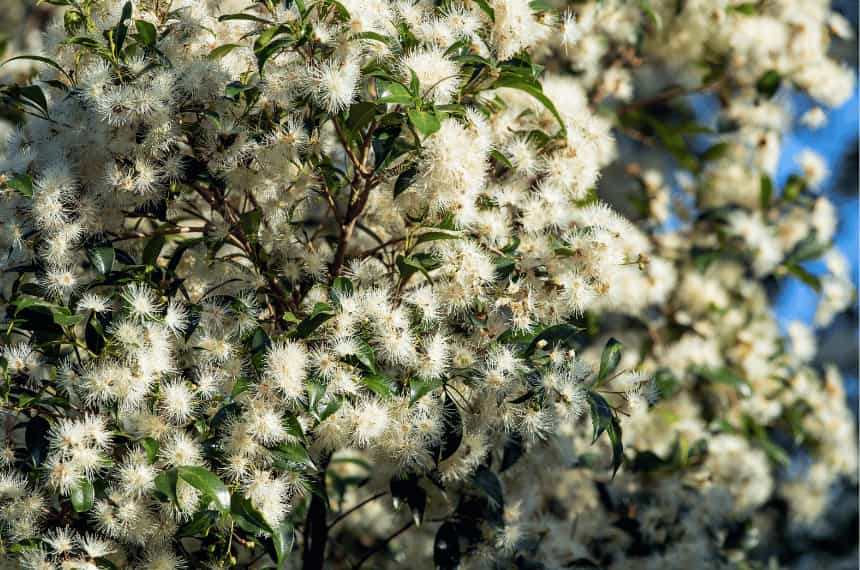Known by avid gardeners and landscapers as liliums, lily flowers are tall perennials valued for their stunning colours, prolific blooms, and amazing fragrances. These beautiful plants can be grown in flower beds or containers for maximum flexibility and range of use. They are relatively easy to care for and are popular in many Australian gardens today.
Our plant gurus thought it was important to note early on here that not all well-known plants with lilies in the name are true lilies. Examples of these misnomers include arum lilies, belladonna lilies, and even the lilly pilly. For this reason, it is common to see the name ‘lilium’ used by professionals and even avid backyard gardeners to refer to true lilies.
The growing information presented here in this guide targets true liliums and includes the following key features:
- Botanical name: Lilium spp
- Family name: Liliaceae
- Plant type: Fleshy bulb
- Flowering: Summer
- Size: 70cm to 180cm
8 best lilies hybrids in Australia
Eight different types of lilies can be grown easily in Australia. These are specialised hybrids, more commonly called divisions.
As these plants grow from bulbs or tubers, they are perennials and will come back year after year to add colour and fragrance to any garden space where they grow. Our plant experts have chosen the following eight examples as the best for Australian backyard gardens.
1. Asiatic hybrids: World’s most popular lilies

Asiatic hybrids are the result of cross-breeding selective lilies over many years. Most of these originated from Central and East Asian species. Asiatics come in various colours and are very easy to grow and care for, making them ideal for Australian climates.
The petals are often spotted, reaching around 1 to 1.5 metres tall, and can have up to six flowers per stem. They are also one of the earliest blooming varieties in most of Australia.
2. Martagon hybrids: Unique “Turk’s Cap” lilies

The Martagon is a unique hybrid that highlights how diverse the flowers can be in terms of the shape and size of the blooms. Tall stalks feature smaller blooms that hang in a face downward and resemble a cap, hence the name.
Although many striking colour options exist, deep reds are the most common. These plants are early bloomers that can survive the cooler weather and shade and still produce as many as 50 blooms per stem.
3. Candidum (Euro-Caucasian) hybrids: Elegant European varieties

Candidum hybrids are a classification of liliums made up of European varieties. As such, these flowers are generally harder to find and are less commonly seen in Australian gardens. They are, however, stunning specimens that come in a range of colours, and some varieties can reach a height of 90-100cm.
The blooms of these varieties are generally cream to white, but other colours are available that are treasured by gardeners.
4. American hybrids: Late spring bloomers

Like their European counterparts, American-cultivated lilies are occasionally seen in Australian gardens. These hybrids tend to bloom in late spring in warm climates and midsummer in cooler climates.
The unique hanging bloom position and curved petals give them a delicate and unique look that sets them apart from other lilies. While yellows and oranges are the most common colours, other hues can be found with a little searching and specialised care.
5. Longiflorum hybrids: Elegant easter lilies

These elegant trumpet-like flowers offer any garden a bright white splash and amazing fragrance. As they are commonly seen to bloom around the holiday, they have earned the common name of Easter Lilly.
While their colours are stunning and popular, they do not do well on the ground. This is why they are usually grown in pots and enjoyed as cut flowers. Flower stems can be up to 90 cm, with as many as 15 flowers adoring each.
6. Trumpet and Aurelian hybrids: Fragrant beauties

Aurelian hybrids, as well as the popular trumpet lilly hybrids, are wonderful for Australian gardens. They are prolific bloomers, come in various colours, have fragrant flowers, and do best in full sun or partial shade.
Mature plants have flower stems reaching 160 -180 cm with more than a dozen blooms per stem. However, they are not frost-hardy, so they do best indoors or in pots where they can be moved when the temperature drops.
7. Oriental hybrids: Late summer bloomers

Oriental lilies are known for being hardy plants. They are somewhat late bloomers compared to other lilies, as they bloom best in late summer. Their large flowers are bright fragrant, and can be as tall as 90-150.
However, these plants have a reputation for being one of the more finicky and difficult lilly species to grow in Australia. Fragrant blooms range in colour from red to pink to orange and even include cream and purple varieties.
8. Interdivisional hybrids: Scientific marvels

This group of lily plants is the most unique and diverse. It includes all other Interdivisional Hybrids or varieties created by crossing between different varieties not normally hybridised in this manner.
They vary in size, colour, fragrance, growth, and care requirements and take a much more specialised approach to their growth and care. They are among the most rare Australian lilly varieties seen in gardens today.
It is also worth noting that there are Species Lilies. This division includes native species and wild varieties of lillium family plants that call Australia home.
In total, there are believed to be as many as 100 wild species. It is worth noting that these native varieties look much different from the more common garden lilies. Flowers are smaller and more delicate and often resemble gingers and orchids.
Choosing the right type of lily for your Australian garden
What is the most common type of lily?
American hybrids are easy to grow, multiply rapidly and come in popular shades of yellow, orange, and red, with other colour varieties available for lush groups and small low maintenance hedges.
What lilies are native to Australia?
Many native Australian plants are referred to as lilies. These can be found in gardens across the continent. However, most are different from the traditional lilies most people think of.
What is the most beautiful lily flower?
Easter lilies are often hailed as some of the most beautiful and widely recognised varieties. The trumpet-like flowers are easily picked out, and the fragrant blooms are ideal for indoor use.
What is the best lily flower?
The Martagon hybrid lilies are often cited as among the best lily plants. They are easily grown in most Australian garden spaces. Their popularity is thanks to the brilliant colours and prolific blooms.
Which lily smells the best?
Aurelian hybrids are often described as abundant, lush, and colourful. They are absolutely stunning when they are in bloom. These long-lasting flowers also have a strong, sweet fragrance.
Which lilies last the longest?
Asiatics are praised by gardeners for brilliant and long-lived blooms. Their durability and longevity make them great for garden use. They should be considered for home gardens.
Which lily blooms the longest?
Oriental lilies are a late-summer blooming option for Australian gardeners. This is the one if you want a plant that looks great all season long. Long-lasting foliage and blooms complete the package.
What is the rarest type of lily?
Candidum hybrids should be considered very rare and unique. They are a perfect example of lily plants seen in Australia. They are a European variety, but they are rare here in Australia.
Final Thoughts
Our plant and gardening experts value the lily perennials for their stunning colours, prolific blooms, and amazing fragrances. We hope this care guide proves useful as you look for the perfect lily for your Australian garden space. Whether you want to add a splash of colour or need something for smaller or narrow areas of the landscape, lilies can be a wonderful option worth considering!






